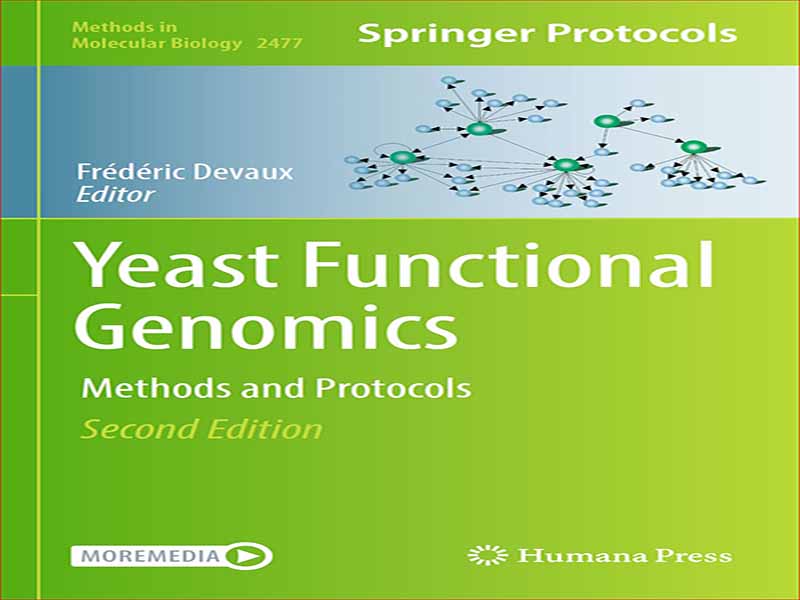- عنوان کتاب: Yeast functional genomics/methods and protocols
- نویسنده: Frédéric Devaux
- حوزه: ژنومیک مخمر
- سال انتشار: 2022
- تعداد صفحه: 467
- زبان اصلی: انگلیسی
- نوع فایل: pdf
- حجم فایل: 15.8 مگابایت
پنج سال پس از انتشار اولین ویرایش از سری کتابهای روشها در زیستشناسی مولکولی، ژنومیکس عملکردی مخمر: روشها و پروتکلها، به نظر میرسد که موضوع از همیشه مرتبطتر و زندهتر است. نه تنها اصول اولیه ژنومیک عملکردی مخمر هنوز به طور گسترده توسط صدها آزمایشگاه استفاده می شود، بلکه تکنیک های جدیدی ظاهر شد که قدرت رویکردهای ژنومی عملکرد مخمر را افزایش داد. دستگاه های توالی یابی نسل سوم با دسترسی به cDNA های تمام قد، شروع جدیدی به ترانس کریپتومیک مخمر دادند و حتی امکان توالی یابی مستقیم RNA ها و تغییرات شیمیایی آنها را فراهم کردند و راه را برای اپی ترانس کریپتومیکس مخمر هموار کردند. سنجش اشباع ترانسپوزون، RNAi و CRISPR/cas پتانسیل بالایی را برای غربالهای ژنتیکی جهانی در مخمر، به دنبال برهمکنشهای پروتئین-پروتئین، و ژنهای ضروری یا برهمکنشهای ژن-دارو، تقویت کرد. در همان زمان، فنومیکس مخمر، به عنوان مثال، پروفیل فنوتیپی مخمر با کارایی بالا، که در پایان دهه اول قرن ظاهر شد، خودکار شده است و اکنون از مجموعههای سویهای با کد نواری استفاده میکند که امکان ردیابی دقیق اصل و نسب را فراهم میکند. روشهای جایگزین برای روش کلاسیک توالییابی ایمونوپسیت کروماتین (ChIP-seq)، همراه با رونویسی تک سلولی و با توسعه تکنیکهای مختلف برای تشخیص فعالیت RNA پلیمراز II در سراسر ژنوم، نحوه تصور ما از شبکههای رونویسی مخمر را تغییر دادهاند. پروفایل ریبوزوم خاص، پروتئومیکس کمی و مناسب با روش هوشمندتر برای تجزیه و تحلیل کمپلکس های پروتئینی بومی، دانش ما را از شبکه های نظارتی ترجمه به همان سطحی که همتایان رونویسی آن ها دارند سوق می دهد.
Five years after the first edition of the Yeast Functional Genomics: Methods and Protocols issue of the Methods in Molecular Biology book series came out, it seems that the topic is more relevant and livelier than ever. Not only are the basics of yeast functional genomics still extensively used by hundreds of laboratories, but new techniques appeared that scaled up the power of genome-wide approaches of yeast functioning. Third-generation sequencing devices gave a new start to yeast transcriptomics by giving access to full-length cDNAs, and even allow direct sequencing of RNAs and their chemical modifications, paving the way to yeast epitranscriptomics. Transposon saturation, RNAi and CRISPR/cas assays empowered the already high potential for global genetic screens in yeast, looking for protein-protein interactions, and essential genes or gene-drug interactions. At the same time, yeast phenomics, i.e., highthroughput yeast phenotypic profiling, which appeared at the end of the first decade of the century, has been automatized and now takes advantage of bar-coded strain collections allowing for accurate lineage tracing. Alternatives to the classic chromatin immunoprecipitation-sequencing (ChIP-seq) approach, together with single cell transcriptomics and with the development of various techniques to detect RNA polymerase II activity all along the genome, have been changing the way we envision yeast transcriptional networks. Specific ribosome profiling, tailored and more quantitative proteomics with smarter way of analyzing native protein complexes are pushing our knowledge of translational regulatory networks to the same level as that of their transcriptional counterparts.
این کتاب را میتوانید بصورت رایگان از لینک زیر دانلود نمایید.
Download: Yeast functional genomics



































نظرات کاربران